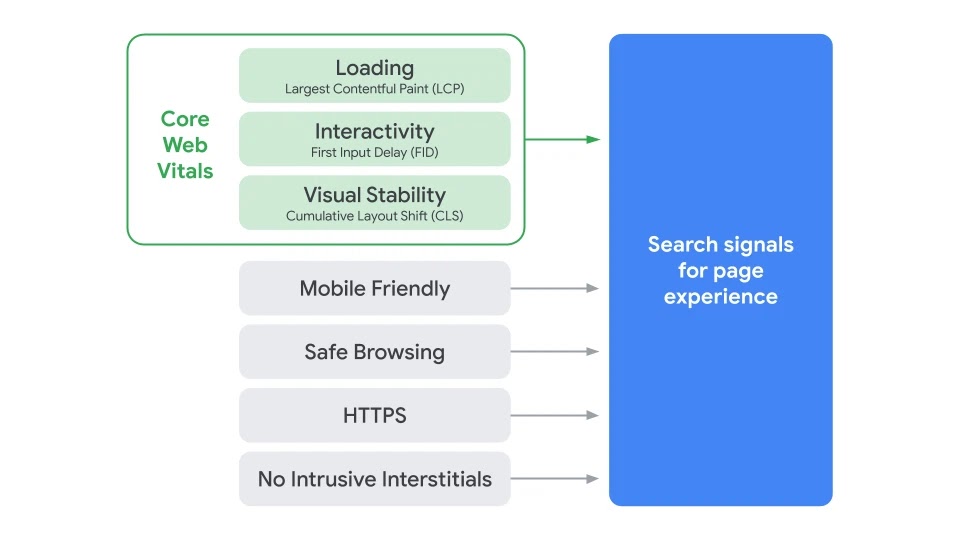
What Does Google’s Algorithm Change Mean for Your Website?
Closures, openings, re-openings, new information, science, pandemic best-practices…we’ve been navigating quickly shifting unknowns for a year. One thing is for sure, by nimbly changing marketing tactics your team has increased it’s marketing agility, which is helpful when aligning your marketing strategy with new digital marketing trends. In our latest chapter of the G5 MarTech Report, we cover voice search, Search Engine Optimization (SEO), Google My Business (GMB), and social media.
Today we’re going to take it one step further with a trend that is in the testing phase, and will release in May 2021: Google’s Page Experience update. We’ll go over what we know, what digital marketing best practices align with the new release, and what changes you can make to be up-to-date and ready when it’s go-time.
Why Does This Change Matter?
You want to connect with researching renters, or researching seniors and their loved ones, where they are — online. In order to build trust, and set your property or community apart from the competition, you need a smooth online experience that is focused on user experience best practices. Bottom line: if researching renters or residents are frustrated with your website, they’ll leave and go somewhere else that provides the information they need. Search engines, like Google, use algorithms to determine which websites they recommend to searchers. By tailoring your website to align with the website qualities search engines are looking for, you have a higher likelihood of meeting the needs of searchers. As an added bonus, it could also increase your search engine results page (SERP) ranking. For more on SEO basics, check out this blog.
What’s Different With the New Algorithm?
For years Google has worked to build algorithms that provide searchers with the information they seek. They’ve prioritized higher SERP rankings for websites that are considered trustworthy, and known to answer searcher’s questions.
Google’s focus on user experience isn’t necessarily new, but their new algorithm changes which factors they consider important. At G5, we are obsessed with customer experience. To us a great customer experience means making it easy and effortless for your prospects to find, connect, and engage with you online. Google’s new algorithm will support websites that do just that.
According to Google, their page experience signal will “Measure aspects of how users perceive the experience of interacting with a web page. Optimizing for these factors make the web more delightful for users across all web browsers and surfaces, and helps users perceive the experience of interacting with a web page. We believe this will contribute to business success on the web as users grow more engaged and can transact with less friction.”
Which Parts of the “Old” Algorithm Are Sticking Around?
Google’s previous algorithm measured and prioritized SERP ranking based on characteristics called Core Web Vitals. These were user-centric metrics that Google used to measure the quality of web experience including:
- Loading — The amount of time needed for the largest page elements to load, which signals to the user that the website is working. Of course, speed is a tradeoff between showing beautiful floor plans or unit grids, and meeting our short attention spans.
- Interactivity — How fast a user can interact with the content on your website. Interactivity differs from the website load time above because it tracks the time it takes users to engage with a website. Differences aside, these metrics focus on the value of making an excellent first impression by being fast and responsive.
- Visual Stability — Have you ever used a website and accidentally clicked on an, “order now” button, because the content shifted? Yikes! No one likes to be tricked, or to be taken advantage of when they accidentally do something. Therefore, Google uses this Visual Stability ranking to prioritize websites with better, more stable, user interfaces to higher SERP rankings.
Essentially, Google prioritizes for excellent user experiences. As the kinds of activities we perform online have dramatically broadened over the last year — from telehealth, to work-from-home, to virtual-school, to on-demand virtual fitness classes — our expectations for what qualifies as a good online experience have changed, and with it, so will the algorithm.

What Is New in the “New Algorithm”?
Google’s new algorithm, illustrated in the diagram above, will now also look for qualities including mobile-first, safe browsing, HTTPS, and interstitials (pop-ups). We’ll go over each of these in more detail below, and explain how your MarTech provider can make sure you’re ahead of the algorithm curve.
- Mobile Friendly — More than being kind to cell phones, a true mobile-first website approach means that the pages, and the structure of the website are adapted for navigation on mobile devices. For example, on G5 websites (which are not only mobile friendly, but truly mobile-first), a hero video is used for users browsing on a desktop. However, a smaller static image is used for those researching from their mobile device. We also know what is important for searchers to see first, so we first load what is in the searcher’s viewport to make the end user experience faster.
- Safe Browsing — Google doesn’t want to promote malicious websites. So, in their new algorithm, the content of the website can’t be malicious, misleading, or virus ridden to earn a high SERP ranking.
- HTTPS — HTTPS websites signal to the user that they are safe, secure, and that information entered into the website during a form fill is protected. When you’re researching for a new apartment, storage unit, or for a senior living community for a loved one, you’re there to find a solution for a high-stress life event: a place to live, where to store your valuable belongings, or who will care for a loved one. You want your home, where you store your belongings, or the home for your parents to be safe. Having a secure website is one way to communicate that you take safety seriously.
- No Intrusive Interstitials — No one likes pop-ups. This ranking factor looks to see if your website is free of annoying popups, advertisements, and elements that make for a poor user experience.
Bottom Line
While a lot of this information is geared toward the next algorithm release in May 2021, Google has communicated that they’ll be examining their algorithm through the user experience lens and updating as needed annually. So, instead of updating your website for a few qualities on a list, it’s important to think of SEO through the lens of creating a website user experience that is intuitive and builds trust with researching prospects. Here are a few qualities to think about when considering your approach to the new algorithm.
- Clear and Useful: Your website calls-to-action are clear and users can intuitively understand how to navigate and find the information they’re looking for with a minimal number of clicks.
- Visually Pleasing: The website must not only be functional, but beautiful too. Elements need to feel cohesive and support your overall brand guidelines (more on this in Part 5 of the G5 MarTech Series coming to you in June 2021).
- Localized: Follow a hyper-local SEO strategy to connect with your customers.
- Accessible: Your website needs to be available to all searchers, regardless of how they access your website and what devices they need to access your website.
- Trustworthy and Valuable: When searchers are engaging with your website they’re paying with their most limited resources — their time and attention. They expect a return on their investment, by that we mean, they expect that you’ll answer their questions and provide accurate information.
Perhaps these categories feel a bit broad, but they serve as a good jumping off point to consider how you can bring user experience into your digital marketing trend adoption.
Digitally Agile
Digital marketing is constantly evolving, and with it so are digital trends and best practices. While the new algorithm is a great example of an upcoming change, we share other changes you need to know about voice search, Google My Business, and social media in Part 2 of the G5 MarTech Series: Digital Trends. Download the report, and stay up-to-date in this quickly moving arena.
Get News, Articles & Updates in Your Inbox
Thank You for Your Interest
We will be in contact soon and look forward to learning more about you and your company. Based on your marketing challenges, we’ll discuss increasing visibility into your analytics and how to generate more and better leads so you can achieve your marketing goals.
In the meantime, we invite you to check out our checklist on website accessibility. Use this checklist to start assessing the baseline accessibility of your website.
Enjoy! We’ll be in touch very soon.
